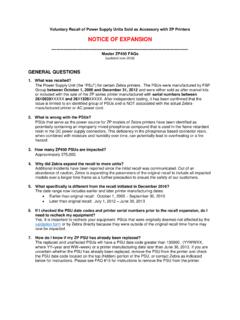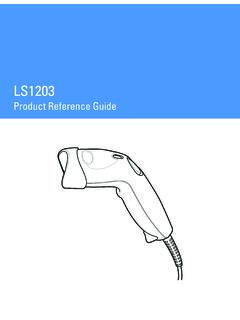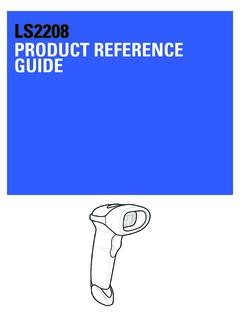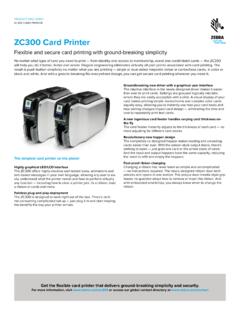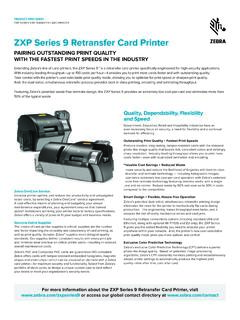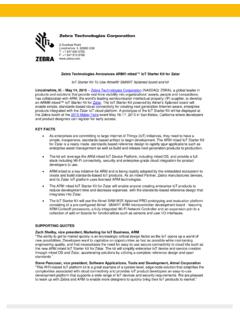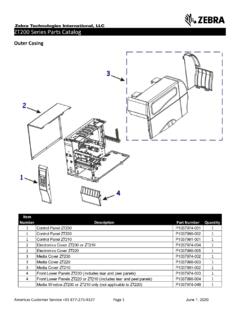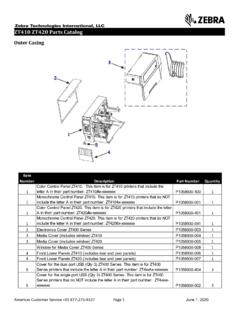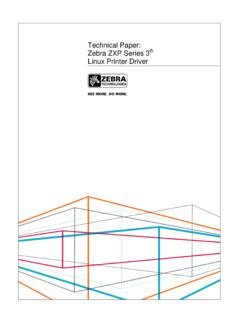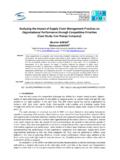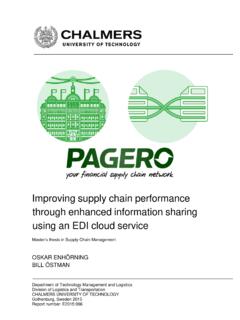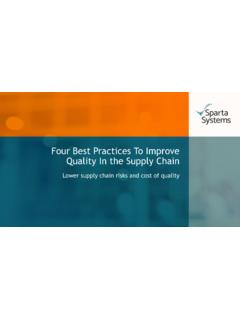Transcription of The Path To Peak Supply Chain Performance
1 WHITE PAPERL ocation soLutionsThe Path To peak Supply Chain PerformanceLinking ERP With An Automated Wireless Parts Replenishment Solution Gives The Concept Of Continuous Improvement Real MeaningFor nearly two decades, some of the world s best minds have been devoted to the practice of Supply Chain management. still, a large percentage of manufacturing companies struggle to optimize Supply Chain operations. in fact, iDc Manufacturing insights, a leading industry analyst firm, recently concluded that there is currently $900 billion of waste in global manufacturing Supply are many reasons for this staggering level of inefficiency, starting with the simple fact that running a Supply Chain with numerous moving parts material, equipment, people, etc.
2 Scattered about the globe is a complex undertaking. in recent years, manufacturers have made great strides in improving Supply Chain Performance through the adoption of lean manufacturing and other cutting-edge management principles. Yet the ultimate goal of a low-cost Supply Chain that delivers the perfect order on time, every time remains elusive for many manufacturing that goal requires something that many early lean practitioners opposed: using information technology to automate those well-crafted lean processes. companies that follow lean principles like building to actual customer demand rather than adhering to forecasts and bringing material to the plant only when needed, as opposed to keeping large stockpiles on hand, operate with extreme efficiency when business conditions are stable.
3 Customer demand is predictable, raw material prices are stable, and suppliers are always reliable, making it easy to map and execute streamlined production PAPERL ocation soLutionszebra technologies 2 Global Business Realitiesin reality, however, few manufacturers especially those operating global Supply chains ever see such stable business contemporary manufacturers operate in a world in which change is the only constant. customer demand changes weekly, commodity prices fluctuate daily, and an unforeseen global financial crisis forces previously dependable suppliers out of business with little or no this environment, simply running a lean operation is not sufficient.
4 In the current business climate, manufacturers need to take lean principles a step further. they must build a level of flexibility into their lean processes,providing the ability to respond quickly and appropriately to constantly changing business conditions without ratcheting up operating flexibility comes through deployment of it systems that not only quicken the pace at which business processes are executed, but also can analyze if those processes are working well enough to support the company s current business goals. ultimately, these systems should give a manufacturer the necessary information to revise business processes before they start to impair the company s overall area in which it systems can significantly enhance a manufacturer s flexibility is the parts replenishment process.
5 Automating parts replenishment is especially effective in industries such as automotive, aerospace, and industrial manufacturing where large numbers of parts are routinely moved to production lines in just-in-time these plants, forklift drivers typically move parts from storage areas to the production line. the challenge is making sure the right parts in the right quantities are always moving to the right locations at the appropriate times. With most companies in these industries now operating global Supply chains, they also face the added challenge of keeping suppliers informed of the proper times for delivering parts to the plants.
6 In companies that employ lean principles, a Kanban process generally is used to manage the flow of material both into and around the plant. in a Kanban-based Material Flow operation, production workers place cards or some other recognizable item, such as an empty parts bin in certain locations to let the forklift drivers know when to deliver more buttons replace manual signalling tools, such as Kanban cards in the Material Flow Wireless Parts Replenishment solution from zebra technologiesWHITE PAPERL ocation soLutionsAuTOMATEd REPLEnISHMEnT SySTEM HAS TRAnSMISSIOn PLAnT RunnInG SMOOTHLyan automated implementation at the GEtRaG FoRD transmissions plant in cologne, Germany.
7 Is a prime example of how the Zebra Material Flow Wireless Parts Replenishment solution can bring a sense of order to even the most complex manufacturing environments. this plant makes six varieties of transmissions for global automotive brands including Ford, Mazda, and Volvo. total production volume exceeds one million transmissions a year, with units shipped to car manufacturers in argentina, china, Europe, Japan, south africa, taiwan, the Philippines, and the serving this broadly dispersed and diverse customer base requires the constant movement of many different parts to the assembly area. that movement must be well orchestrated to avoid the delays associated with excess movement, or the cost associated with storing excess work-in-process inventory.
8 That s where the Zebra Material Flow Replenishment solution comes in. the entire solution at GEtRaG FoRD consists of: a wireless messaging infrastructure of 220 active RFiD Wherecall buttons, each of which is associated with a specific part number; a network of 12 wireless location sensors (antennas); Five ruggedized, mobile Pcs mounted on forklifts; and the Material Flow Replenishment software software application, which is available in 15 languages , runs in German at this facility. GEtRaG FoRD also has adopted the supplier Portal so its suppliers can be promptly notified of when they should deliver more parts to the plant.
9 When an assembly worker presses a Wherecall button to request parts, the exact time of the request is recorded and it is then prioritized according to the rules that GEtRaG FoRD established. When forklift drivers review requests, they are told exactly where to go to pick up the appropriate parts and exactly where to deliver them. this setup helps maintain a synchronous flow of material across the GEtRaG FoRD Supply Chain , resulting in reduced inventory and higher productivity, according to Ralf Vierkotten, supervisor of logistics and material handling, GEtRaG FoRD transmissions. We are operating leaner than ever before , Vierkotten says.
10 Production-line employees no longer need to leave their workstations to help search for parts or to help material control determine the correct part; all they have to do is push a Wherecall active RFiD button, and the system notifies all the required parties from the line side to the forklift driver to the internal warehouse that more parts are needed. this intelligent automated system supports our lean manufacturing processes as we benefit from real-time inventory consumption and can execute replenishment orders just in time. in terms of actual Performance metrics, Vierkotten says the Material Replenishment Flow solution has delivered the following benefits: up to 20 percent improvement in labor productivity; a one-third reduction in daily forklift trips; a decrease in on hand inventory from local suppliers from seven days to two days resulting in a $750,000 savings in inventory carrying costs; improved utilization of floor space for storing parts.
